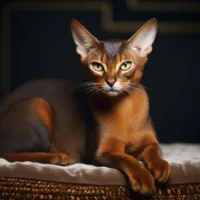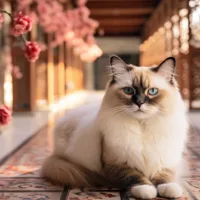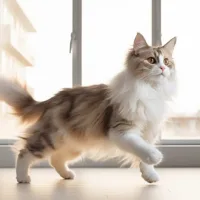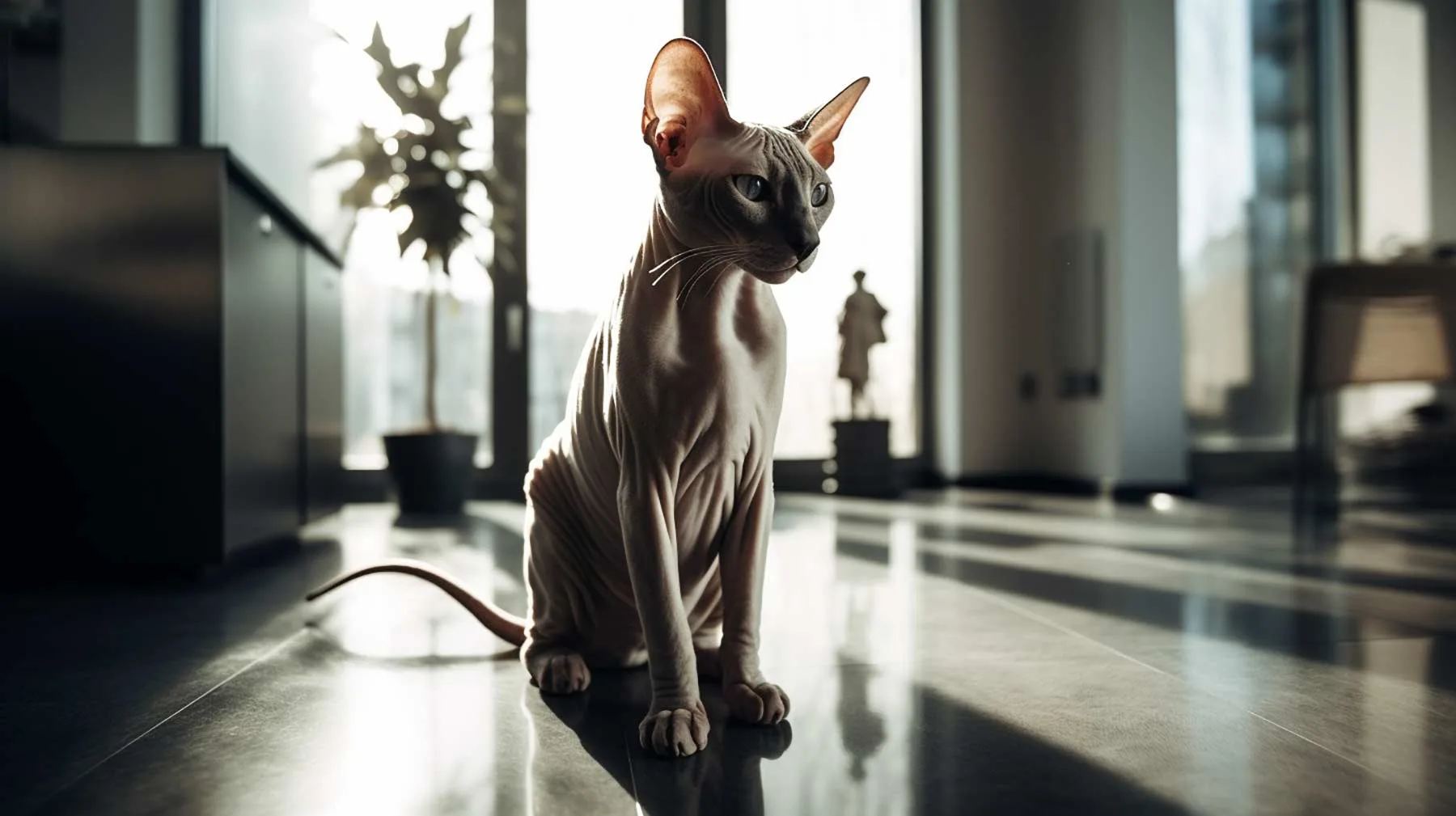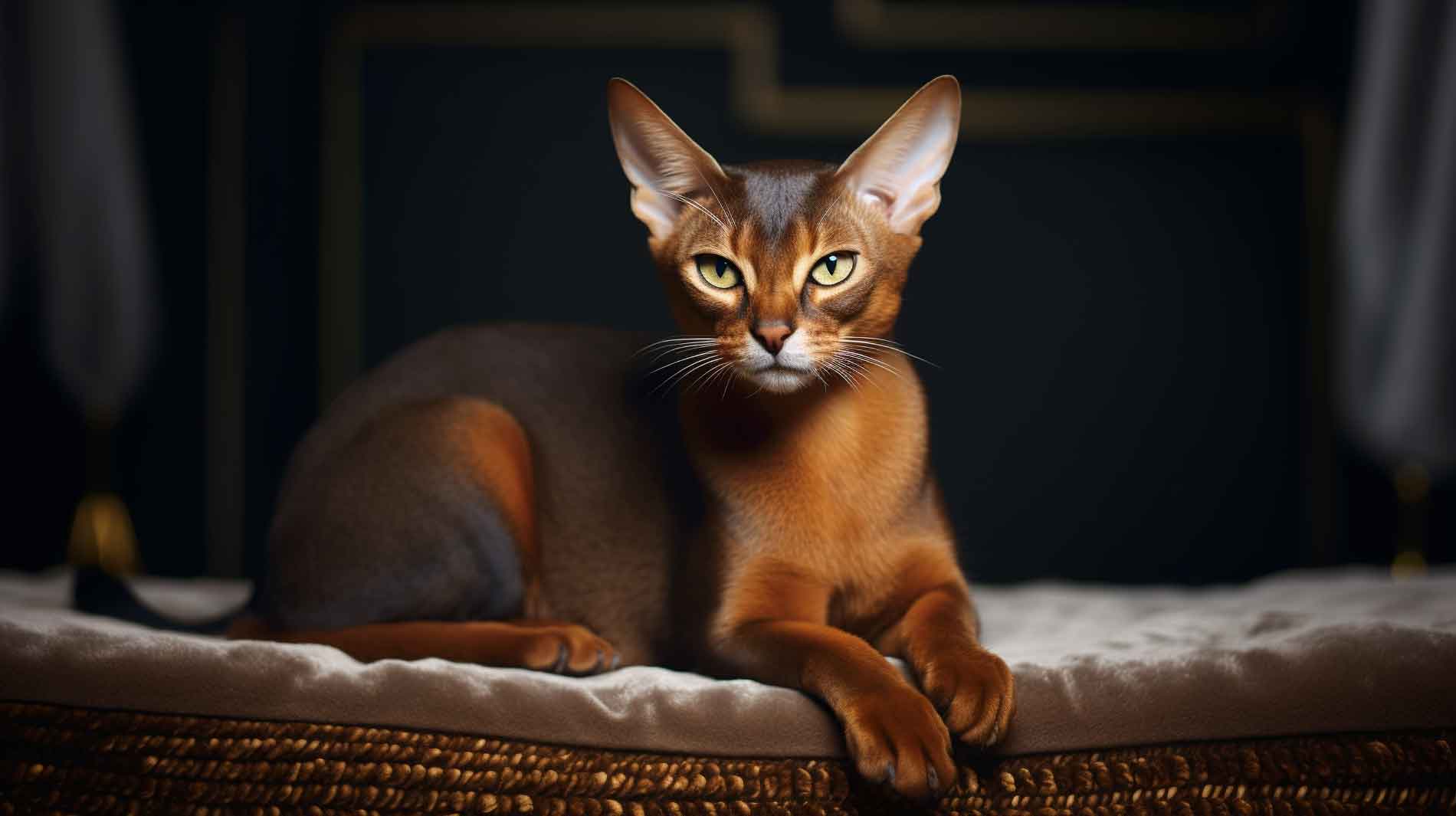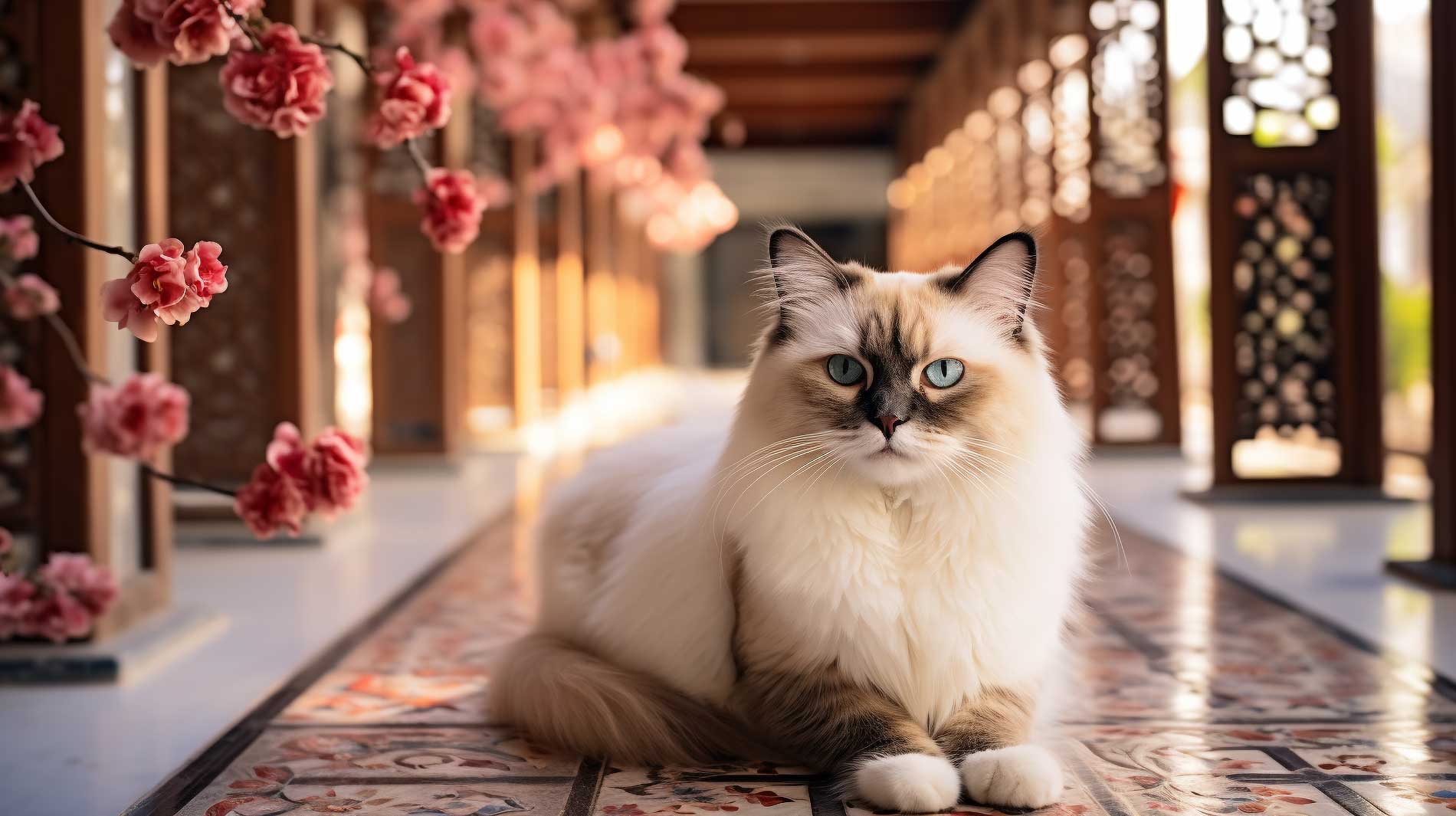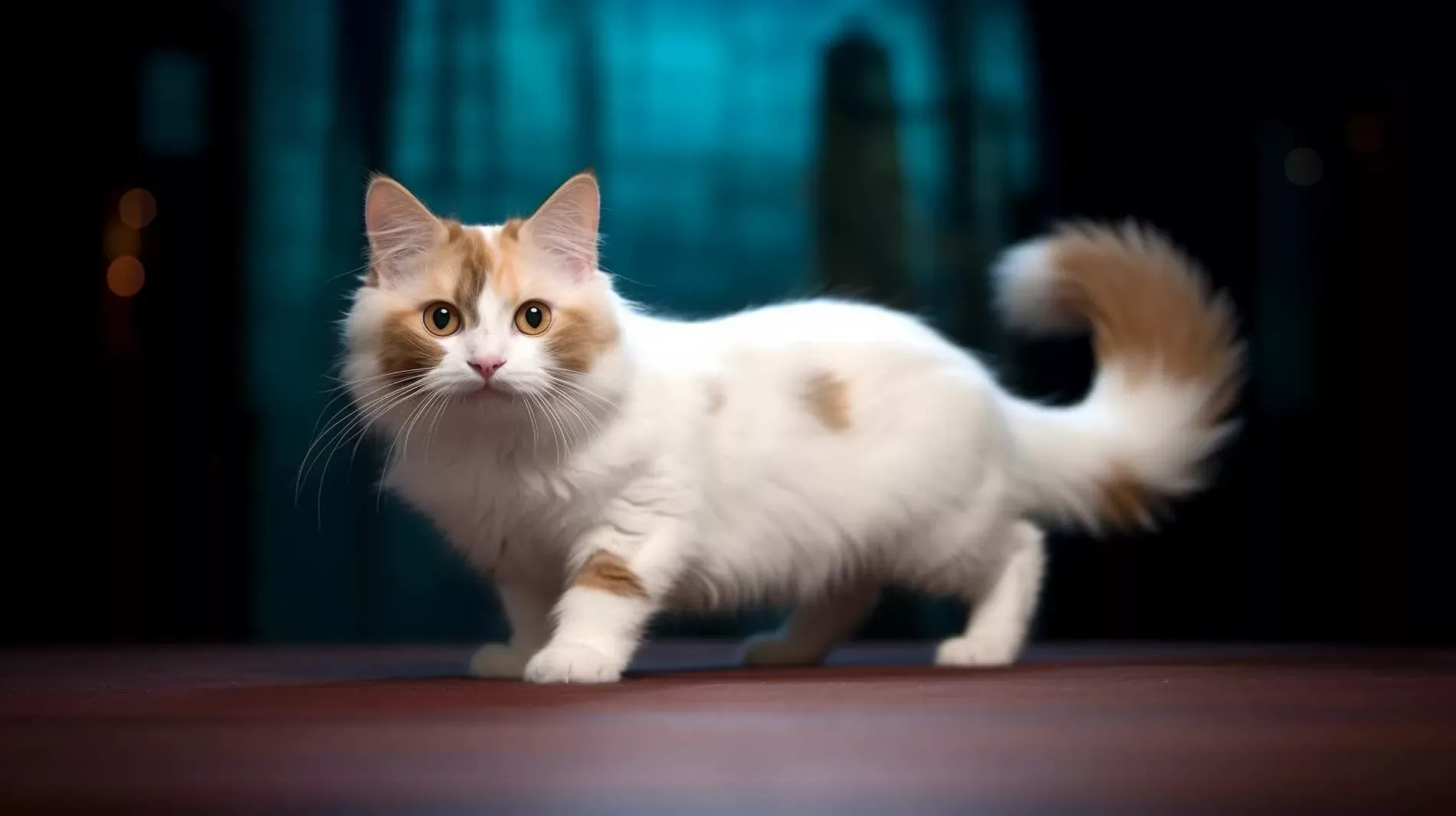Sphynx look & fur – low fur, high care
As the alternative name “Canadian hairless” suggests, the Sphynx cat appears naked at first glance. However, upon closer inspection or touching, it quickly becomes apparent that a fine fuzz covers the skin of this cat breed. If you imagine touching a warm peach or suede, you’ll get pretty close to the feeling of stroking a Sphynx. There is usually some hair on the nose and the back of the ears. Its body appears rather barrel-shaped around the belly, otherwise long and graceful. The Sphynx’s large ears adorn its triangular head, which sits on a long neck, with males having a more muscular, strong neck. These house cats have large, wide-set eyes in the shape of a lemon under a wrinkled forehead, giving them a curious or skeptical expression.
The amount of maintenance required is greater than you might expect at first glance. This cat needs to be bathed regularly because its natural body oils and sweat cannot be absorbed by the coat as in other breeds. To protect the sensitive skin of the Sphynx, you should use a hypoallergenic cat shampoo without fragrances and dyes. It is best to use very soft, warm microfiber towels for drying.
In addition to the weekly bath, you should make sure that you clean its ears regularly as well. Since the Sphynx cat also lacks hair in and around the ears, lard and dust collect and can lead to inflammation. For this purpose, get special cleaning lotion for ears. If your cat doesn’t like getting the liquid directly into his ears, as it is sometimes instructed to be used, try applying it carefully with a cotton ball and gently wiping out the ears. Avoid getting into the cat’s ear canal at all costs.
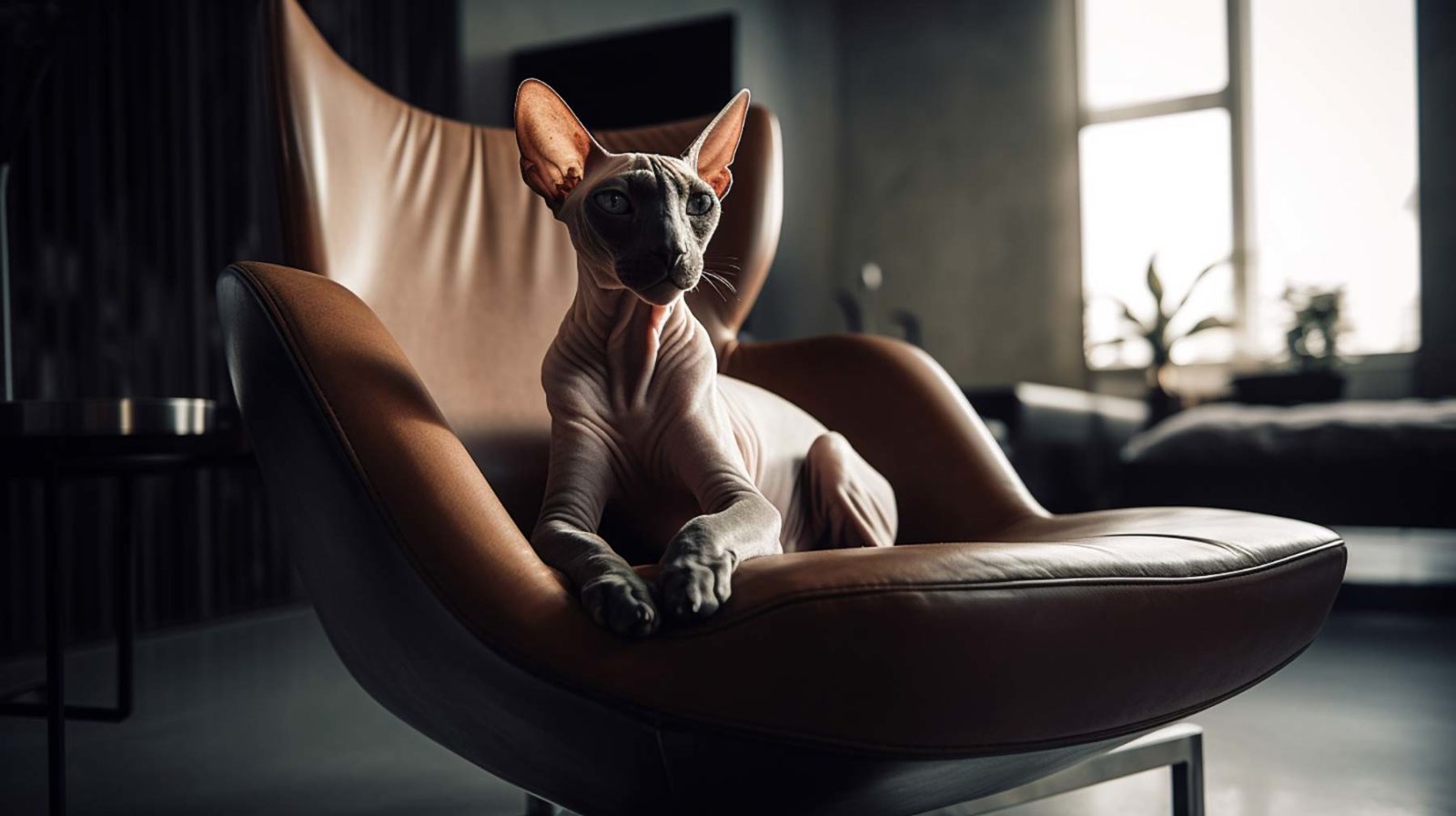
Every two weeks you should trim your cat’s claws because, without hair, more dust and dirt will accumulate in the nail bed, which can cause inflammation. Although we would normally recommend not putting cats in clothes, you can also give your Sphynx cat a sweater for extra warmth if she doesn’t find it too uncomfortable. This kitty can unfortunately get sunburned quickly, so you’ll want to make sure she doesn’t expose herself to the blazing sun in the summer.
Some allergy sufferers are not allergic to the Sphynx, while others find that they are, but usually to a lesser degree.
According to the CFA breed standard, all patterns, colors and eye colors are acceptable.
Sphynx health – wrinkly but robust
Although the unusual appearance of the Sphynx suggests otherwise, it has fewer problems to deal with than some other breeds. One reason for this could be that they have been bred since the 1960s, and its genes have been repeatedly mixed with that of normal-haired cats. Nevertheless, like many purebred cats, the Sphynx is also prone to hypertrophic cardiomyopathy (HCM). This is a genetic disease in which there is a thickening (hypertrophy) of the heart muscle. Fortunately, cats carrying this gene can be pre-tested and excluded from breeding.
Furthermore, Sphynx cats tend to have Urticaria pigmentosa, a congenital form of mastocytosis. In this type of disease, there are too many mast cells in the body. These are normally responsible for fighting off pathogens. When too many of them accumulate in the skin, an itchy rash develops with spots, redness, or wheals.
In both diseases, the prognosis is generally good. Apart from this, there may also be a susceptibility to periodontal disease.
Sphynx diet – nutrition for keeping the heat on high
Due to its almost non-existent fur, the Sphynx cat requires a higher body temperature than other breeds. This consumes more energy, which is why the metabolism of this breed is also faster. Therefore, she needs food that especially supports her in gaining energy. Since the digestive tract and metabolism of cats are designed to obtain energy from animal proteins and fats, the food of the Sphynx cat should consist mainly of those. Unfortunately, this is not a given with food manufacturers, and you would be amazed at how many supposedly high-quality cat foods contain vegetable fats! Unfortunately, this does not help your cat at all, because purely biologically it cannot extract the nutrients from vegetable fats at all.
To meet the increased energy needs of a Sphynx cat, high-quality cat food like Dynasty Emperor Ragout is particularly suitable. As for fats, it contains only salmon oil, an energy source that is also beneficial for the skin and immune system. Plus, your cat doesn’t have to eat as much of our ragout as it does of cheaper, lower-quality foods because it can’t use all of the included ingredients. In the case of Sphynx cats, it is worth it for sure, because they usually eat a little bit more than fellow cats of the same weight and of other breeds.
Your cat will also absorb more fluids if she eats this ragout. That’s good news for her kidneys! Cats need lots of fluids to keep them well-flushed. If their food is as nicely hydrated as their natural prey, that helps tremendously. Also close to the natural diet are nutrient-rich vegetables that replace the stomach contents of prey animals. The vitamins they contain are great support for the immune system.
The biotin contained is also tailored to the Sphynx because its sensitive skin can use a good dose of extra care. This also applies to the teeth. Since periodontal disease is not uncommon in this breed, using fresh muscle meat for our ragout is perfect for them. After all, teeth clean up best when they have to work their way through large pieces of filet.
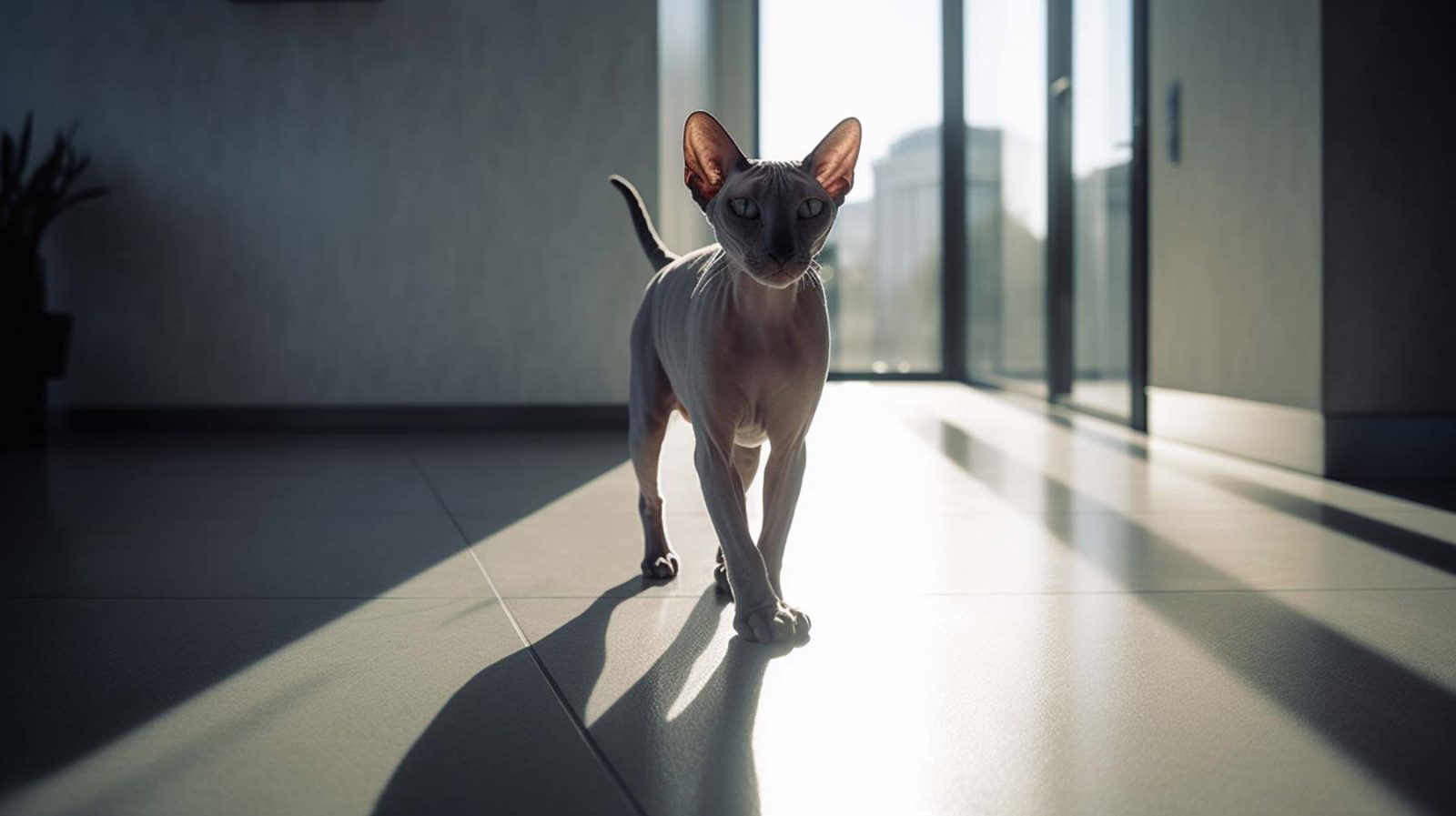
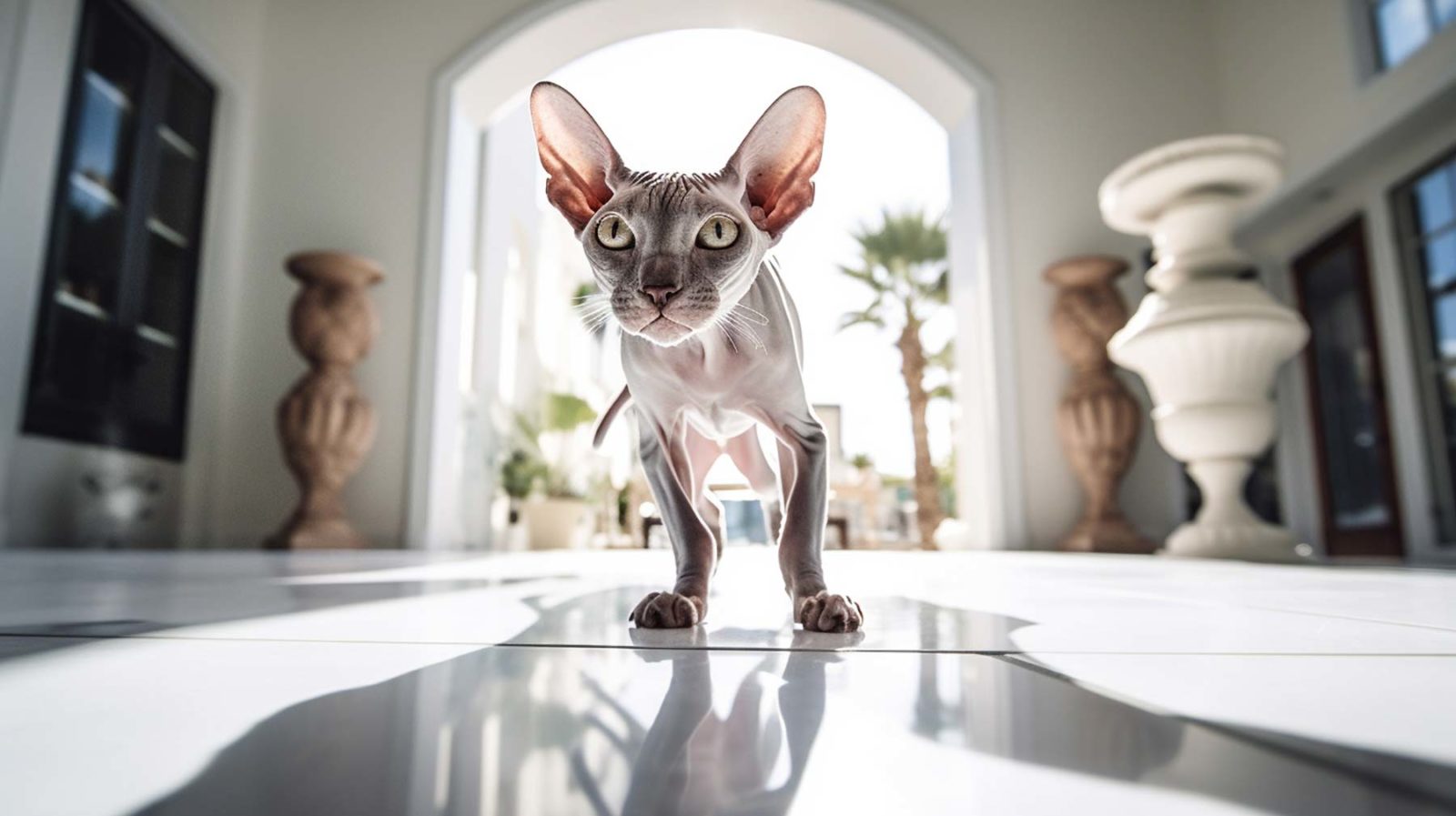
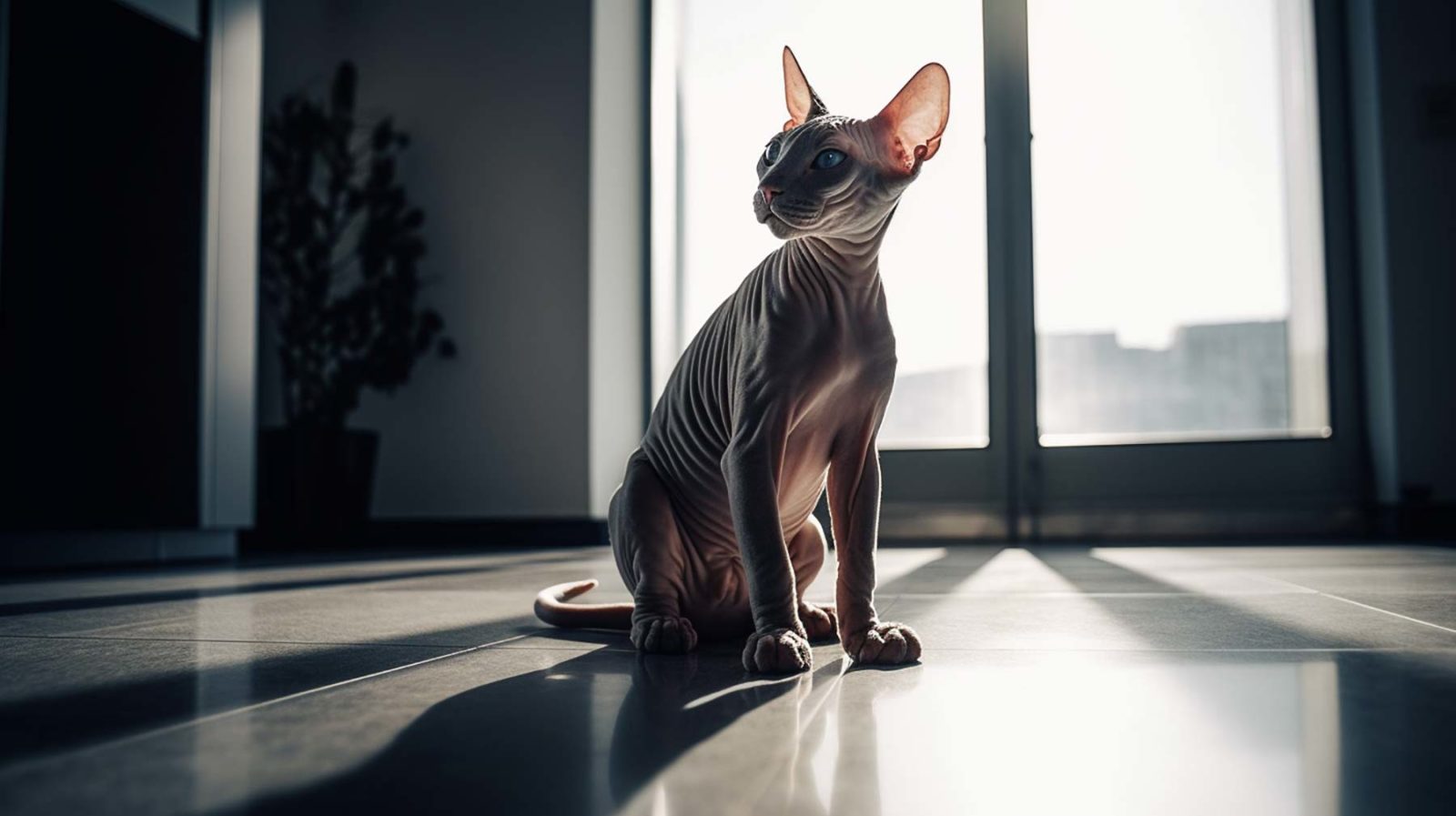
Sphynx character – an agile and affectionate friend for life
The mystical-looking Sphynx joins the ranks of the particularly affectionate cat breeds. In addition to her friendly nature, she represents a particularly active, inquisitive addition to the family and wants to be challenged accordingly. Thanks to her high intelligence, the Sphynx breed is a great candidate for daily clicker training or agility sessions. Because the Sphynx is particularly alert and intelligent, she is also described as dog-like.
So, it is no coincidence that some owners of Sphynx cats also take them for walks. Since the fur is as said hardly present, you should absolutely pay attention to good weather. In general, the Sphynx also looks for warmth, so they like to curl up in fluffy human and cat beds or look for warm sunny places. By the way, natural, heat-giving cat furniture is a good choice here. For example, cat beds with natural materials like feathers and wool or cotton will keep your kitty warm. Your Sphynx will thank you. Sheets you can easily pull off the cover and clean will prove really convenient with a hairless cat.
A cat of this breed will take your full attention. She should not be kept alone when you are out of the house all day, because she is very social and sociable. Commonly, she gets along well with other animals. From there, it’s best to keep her in pairs. As always with pedigree cats, you should only let them out unsupervised if you have a secure garden or balcony, otherwise, you expose them to a risk of theft. Not to mention that you will have less control over the weather your little feline predator is exposed to.
Sphynx history – from mutation to championship
The history of the Sphynx cat breed is still relatively new and can be traced back to Toronto, Canada in the 1960s. Thanks to an accidental gene mutation, a shorthair cat gave birth to a hairless kitten, “Prune”. Therefore, they are also called Canadian hairless. His mom was a black and white shorthair cat. Although Prune himself was not the forefather of today’s Sphynx cats, he had a tremendous influence on the interest in hairless cats. Between 1975 and 1978, several natural mutations of hairless kittens were found in Minnesota and Toronto. These kittens, named Epidermis, Punkie, and Paloma, were bred to Devon Rex, another breed with little fur, and in time the Sphynx breed that emerged from this became established as its own standard. In fact, it was not accepted for the Championship class by the Cat Fanciers Association (CFA) until 2002.
However, some purebred cat registries do not recognize the Sphynx cat because they believe that the hairlessness of the breed is a genetic abnormality that could be detrimental to the health and longevity of individual cats. In 2015, a court decision was made in Berlin that banned the breeding of a Sphynx male named Willi. The lack of whiskers would be passed on to the offspring – which the court considered animal cruelty. The reasoning would be found in the German Animal Protection Act: It prohibits the breeding of animals that lack a species-specific characteristic, the absence of which could cause pain, suffering or harm. Since a cat’s whiskers help it orient itself in the dark, this is judged to be the absence of a sensory organ.
Since then, other courts have also addressed the alleged torture breeding, and at least in Germany, the breeding of Sphynx cats is now banned in some states.
Suitable for experienced cat owners with city apartment and part time work
- Experience level: Experienced
- Housing: Apartment
- Activity level: Medium
- Energy level: High
- Trainability: High
- Attachment: High
- Friendliness: High
- Playfulness: High
- Talkativeness: High
- Intelligence: High
